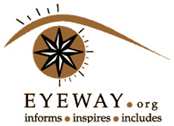www.redherring.com; December 2004
In Tamil Nadu, Aravind Eye Care System offers patients better vision at low costs. Dr. Govindappa Venkataswamy’s vision -- free eye care – is turning into reality. In 1976, he established his first Aravind Eye Hospital in a rented house with 11 beds in Tamil Nadu, India. Now the system includes five hospitals in the state, with 3,590 beds. Though staffed with less than 1% of the country's ophthalmologists, Aravind Eye hospitals perform 5% of India's ophthalmic surgeries. What's more, Aravind provides completely free eye care to 70% of its patients, while maintaining profitability at 40% margins.
One of the main hurdles was actually getting patients to the hospital. The often-elderly patients required escorts, or could not afford transportation. Dr. Venkataswamy, or Dr. V as he is popularly known, initiated an outreach programme using community organisations to identify and assist potential patients. Today, the patient acceptance rate is between 95% to 98%.
To boost patient throughput, Dr. V realized, Aravind's surgeons would need to also boost efficiency. He devised an "assembly-line" approach to surgery, delegating ancillary tasks so surgeons can get in, operate, and get out.
"There'll probably be 10 gurneys lined up outside the operating theater. Someone will wash the eyes, someone will put in the eye-drops. And the patient is then led into the operating room, where nurses do all the preparations," describes Dr. Christine Melton, a Manhattan-based ophthalmologist who spent time at an Aravind hospital in 1981, during her residency. Around five surgeons would move back and forth between the 10 or so operating tables, she says. "They finish one, and the next patient will be set up."
"The model health care used at Aravind is not only innovative, but absolutely the most effective model of health care," says Dr. Alan Robin, associate professor of ophthalmology at the Johns Hopkins School of Medicine and Associate Professor of International Health at the Bloomberg School of Public Health at Hopkins. "Rather than rely on donations and funding, Aravind developed the ability to manufacture all the materials it needed."
A key material in cataract surgery is the Inter Ocular Lens (I.O.L.), usually $50 to $150 in the U.S.A. Aravind Eye Care Systems invested $300,000 in a subsidiary, Aurolabs, which successfully manufactures I.O.L.s at around $2. Today, Aurolabs holds around 6% to 7% of the global market share in I.O.L.s.
Aravind's operating model is open for other hospitals to learn from, and as a World Health Organization collaborator, Aravind is dedicated to eradicating unnecessary blindness globally by the year 2020.
For details, contact: Aravind Eye Hospital, 1, Anna Nagar, Madurai, Tamil Nadu 625 020, India. Phone: +(0452) 25356100; Web: www.aravind.org

Facebook comments